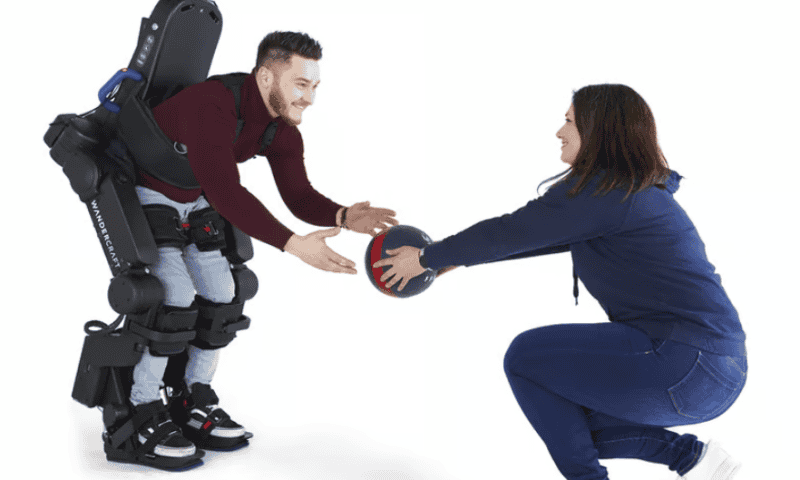Only about a year after earning its first FDA nod, Wandercraft’s Atalante X robotic exoskeleton has broadened that clearance.
The initial clearance came at the end of 2022 and made the Atalante X suit available in the U.S. to help restore mobility in people who’d experienced a stroke. The latest FDA OK, which Wandercraft announced Tuesday, expands its use to those with spinal cord injuries between the T5 and L5 vertebrae.
The Atalante X device is currently confined to use within rehabilitation institutions and clinical research centers, though Wandercraft recently debuted another version of its self-balancing robotic exoskeleton technology that’s designed for everyday, at-home use, as an alternative to a wheelchair.
“In addition to the successful unveiling of our Personal Exoskeleton in December, Wandercraft has achieved several key milestones over the last year, and we have no plans of slowing down,” CEO Matthieu Masselin said in the FDA clearance announcement this week. “What was once a dream of helping people walk again is becoming a reality as we relentlessly pursue our mission of supporting people with walking impairments through every step of their mobility journey.”
The Atalante X is designed to mimic a natural human gait, thanks to its built-in self-balancing technology and powered ankle mechanism.
According to Wandercraft, those features may enable patients who have been left with limited mobility after a stroke or spinal cord injury to resume hands-free walking. Many are able to stand up and begin walking in the exoskeleton during their first session with the device, per the company, and it also allows them to take steps in multiple directions and stay standing in upright, weight-bearing positions.
The FDA clearance came after Wandercraft submitted a combination of real-world and clinical trial data demonstrating the Atalante X suit’s performance in more than 500 patients with T5-L5 spinal cord injuries.
In one such study—the results of which were published in August 2021—a total of 11 patients with T5-T12 spinal cord injuries underwent 12 one-hour training sessions with the suit over the course of three weeks. By the last session, seven of the participants were able to successfully complete a 10-meter walk test without human assistance, while the other four still required some human help. In addition, all of the participants were able to stand up, sit down, balance and turn with the exoskeleton’s help, and five of them reported subjective improvements in their bowel function.
Wandercraft’s technology isn’t the only exoskeleton suit to catch the FDA’s eye. Just last year, for example, ReWalk Robotics scored its own expanded clearance from the agency.
According to the company, that new nod made its eponymous exoskeletons the first authorized for use in surmounting stairs and curbs, compared to other suits that can only be used on flat ground.

